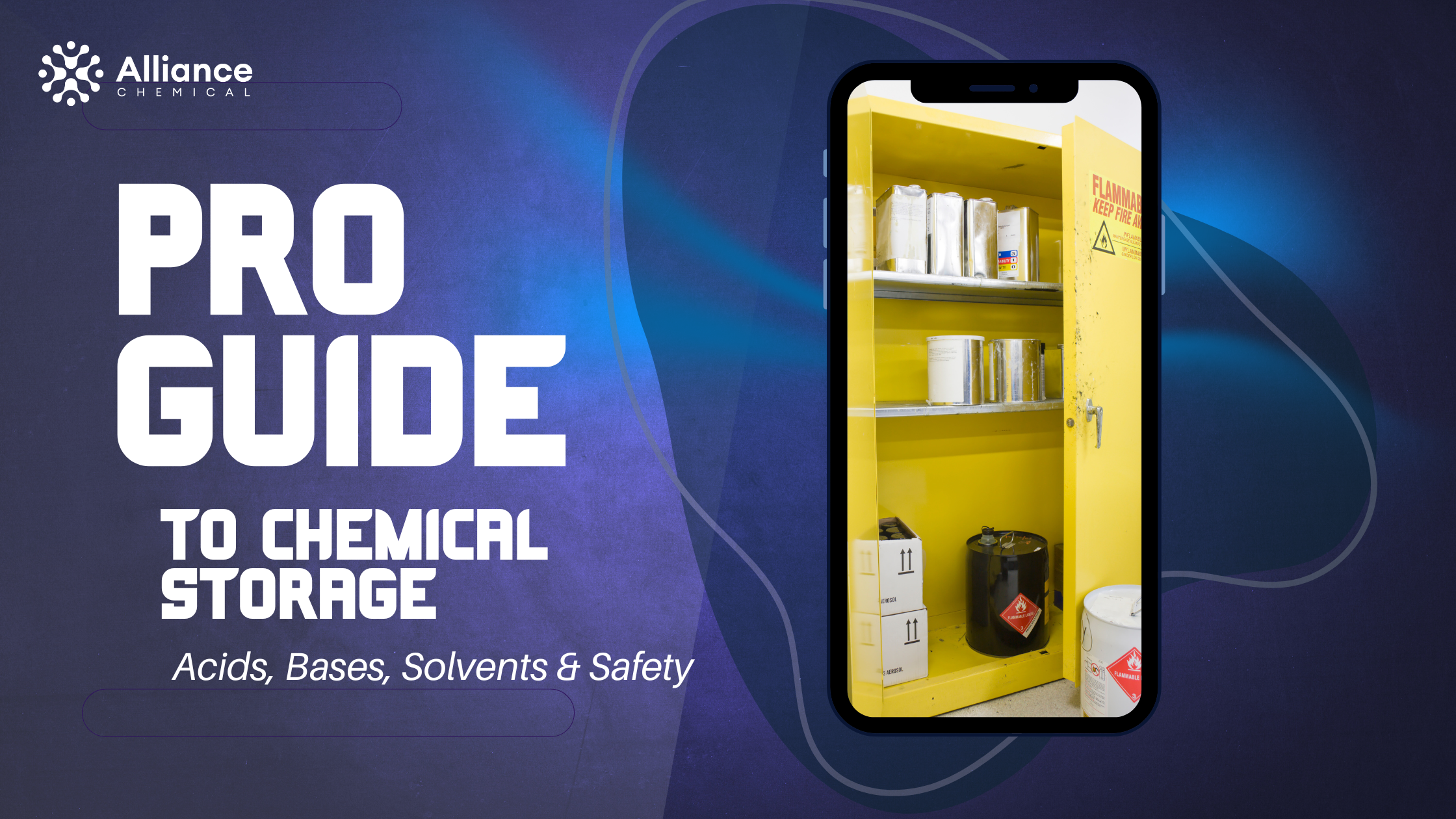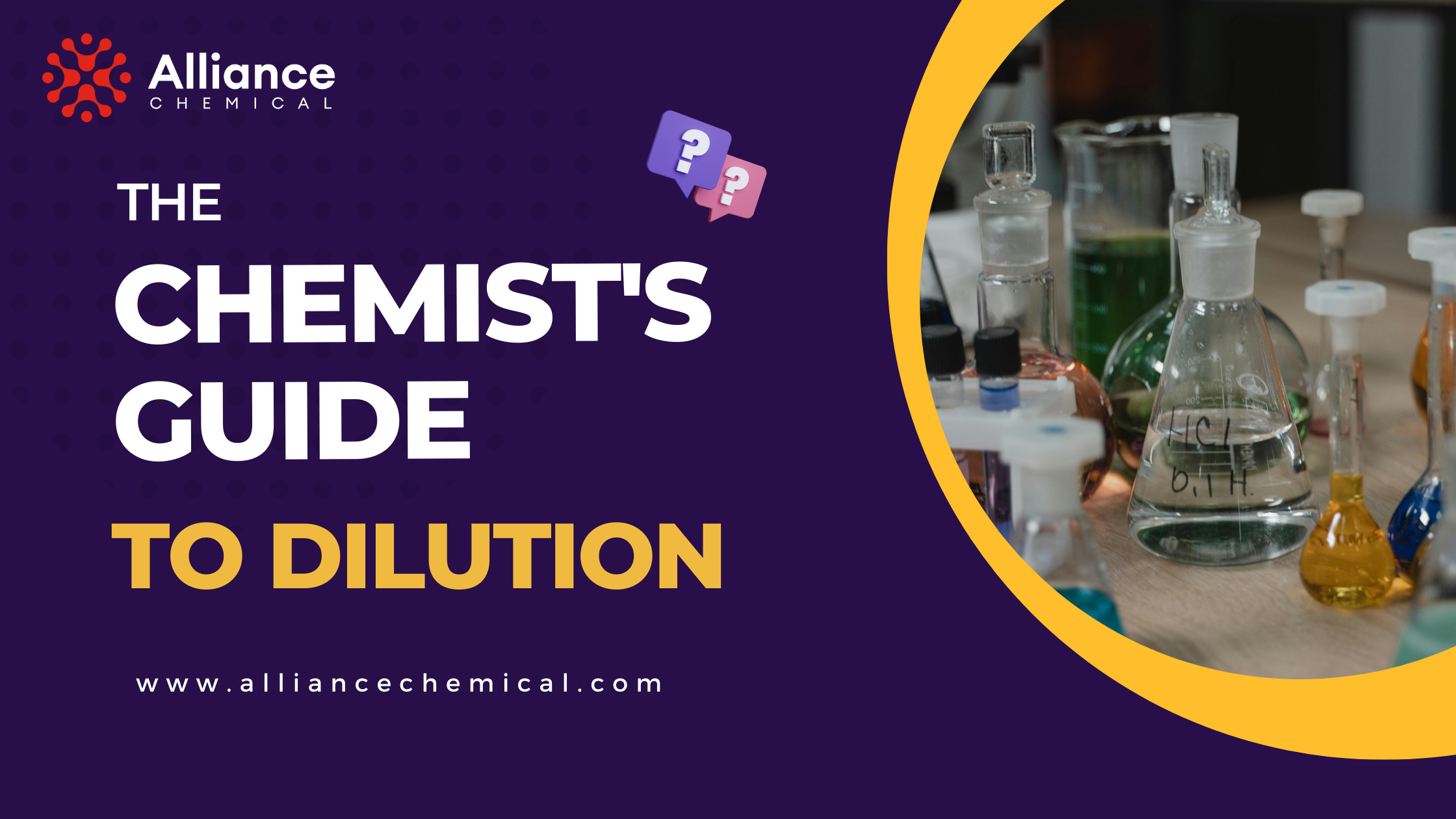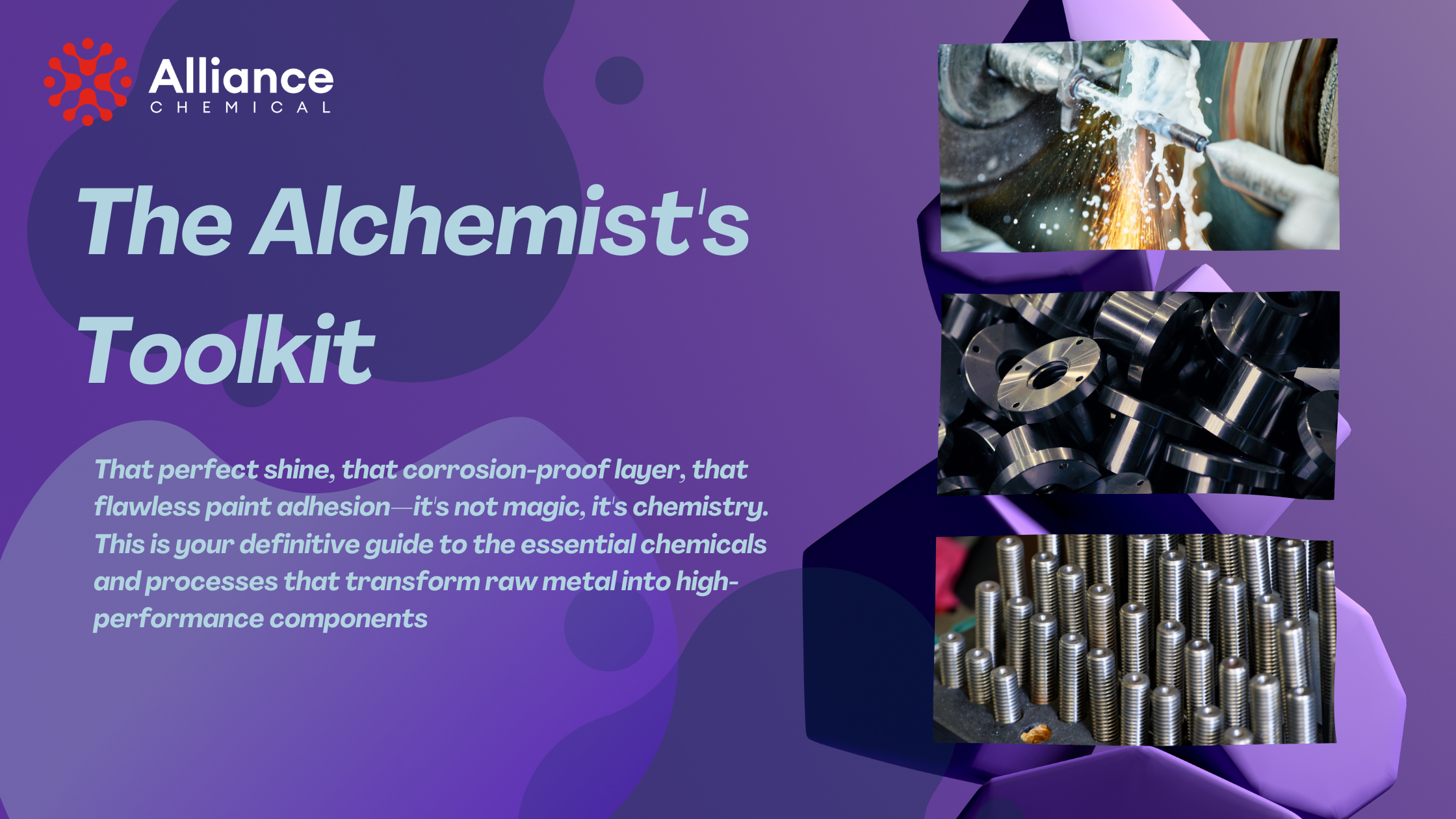
Pro Guide to Chemical Storage: Acids, Bases, Solvents & Safety
Table of Contents
Summary
Most chemical incidents don't happen during use—they happen during storage. A single mistake in segregation or handling is a disaster waiting to happen. This is our definitive guide, built on decades of hands-on experience, to implementing a professional-grade chemical safety and storage protocol. We go beyond the basics to cover the three pillars of safety, then provide a detailed playbook for segregating acids, bases, flammable solvents, and oxidizers. You'll get an expert-level PPE selection matrix for different chemical classes and a step-by-step guide to spill response. This is more than a list of rules; it's a complete system for protecting your people, your facility, and your business.
A safe facility is a productive facility. This is our definitive protocol for the safe storage and segregation of industrial acids, bases, and solvents. An expert guide by Andre Taki of Alliance Chemical.
The Unseen Risk in Every Warehouse
In my 15+ years, I can tell you that most chemical incidents don't happen during use—they happen during storage. An incompatible container, a poorly ventilated room, or two reactive chemicals stored side-by-side is a disaster waiting to happen. Professionalism isn't just about using a chemical correctly; it's about managing it safely 24/7.
This guide is our definitive protocol for doing just that. We'll cover the three pillars of chemical safety before diving into a specific playbook for the major chemical families we handle every day: **Acids, Bases, and Solvents.**
The Three Pillars of Chemical Safety
- Know Your Chemical: The first step is always to read the Safety Data Sheet (SDS) *before* the chemical even arrives. The SDS is the manufacturer's expert guide to that specific product, detailing its hazards, PPE requirements, and storage needs.
- Segregate, Segregate, Segregate: Never organize chemicals alphabetically. They must be stored by hazard class and compatibility. As we'll see, storing an acid next to a base is a recipe for a violent reaction.
- Containment is King: Assume that every primary container (drum, tote, bottle) will eventually fail. Secondary containment—like a spill pallet or a curbed storage area—is what prevents a simple leak from becoming a catastrophic release.

Step one, always: Read the SDS to understand the specific hazards and storage requirements.
The Storage Playbook: Segregation by Hazard Class
You can't just organize chemicals alphabetically. You must organize them by what they *do*. Here's the professional breakdown.
Storing Corrosives: The Acid & Base Protocol
The golden rule is to **separate acids from bases.** When they mix, they undergo a rapid and violent exothermic (heat-releasing) neutralization reaction. This can cause boiling, splashing, and the release of hazardous fumes.
- Acid Storage: Store in dedicated, acid-resistant cabinets. Keep them below eye level. Critically, you must also segregate **oxidizing acids** (like Nitric Acid and Sulfuric Acid) away from organic acids (like Acetic Acid) and all flammable materials. For a deeper dive, see our Guide to Industrial Acids.
- Base Storage: Store in their own dedicated cabinet, away from acids. Keep them away from any aluminum or galvanized metal containers, which strong bases like Sodium Hydroxide can corrode.

Proper segregation means organizing by chemical family, not just by container type.
Storing Flammables: The Solvent Protocol
The primary dangers with solvents are fire and vapor inhalation. It's the invisible vapor, not the liquid, that burns. These vapors are often heavier than air and can travel along the floor to a distant ignition source like a pilot light or an electrical spark.
- Storage Cabinet: Flammable liquids must be stored in a dedicated, grounded flammable safety cabinet designed to protect the contents from a fire for a specific period.
- Grounding & Bonding: This is a critical, professional step. When dispensing from a large metal drum to a smaller container, use grounding straps to connect the drum, the receiving container, and a verified earth ground. This prevents the buildup of static electricity that can create a spark and ignite the solvent vapors.
- Ventilation: The storage area must have adequate air exchange to prevent the accumulation of vapors.
- Incompatibilities: Keep all flammable solvents far away from oxidizers (like Sodium Hypochlorite), which can dramatically accelerate a fire. Read more in our Guide to Industrial Solvents.
Storing Oxidizers: The Special Case Protocol
Oxidizers (like Sodium Hypochlorite or Hydrogen Peroxide) are a unique hazard. They don't burn themselves, but they release oxygen, which can cause other materials to ignite more easily and burn with extreme intensity.
- Isolate Them: Store oxidizers completely separately from *everything* flammable or combustible—especially solvents, oils, greases, paper, and wood.
- Keep Cool & Dry: Store in a cool, dry, dark place. Heat and UV light can cause them to break down, releasing oxygen and losing strength.
Beyond the Basics: Choosing the Right PPE
A simple dust mask won't stop acid fumes, and a latex glove will dissolve in acetone. Choosing the right PPE is a science, and the SDS for your specific chemical is your primary guide.
| Hazard | Eye Protection | Hand Protection | Respiratory Protection |
|---|---|---|---|
| Concentrated Acids/Bases | Chemical Splash Goggles AND a Face Shield | Butyl, Neoprene, or PVC Gloves | Respirator with Acid Gas Cartridges (if vapors/misting) |
| Volatile Solvents | Chemical Splash Goggles | Nitrile (for many alcohols), Butyl, or Viton® | Respirator with Organic Vapor Cartridges |
| Oxidizers (Liquid) | Chemical Splash Goggles | Neoprene or Nitrile Gloves | Not typically required unless aerosolized |
When Things Go Wrong: Spill Response 101
The time to make a spill response plan is *before* the spill happens. Every facility should have designated spill kits located near chemical storage areas.

The Spill Kit Essentials
- Absorbents: Inert materials like Vermiculite, clay, or specialized chemical absorbent pads.
- Neutralizers: For acids, use a weak base like sodium bicarbonate (baking soda) or soda ash. For bases, use a weak acid like citric acid.
- Personal Protective Equipment (PPE): A dedicated set of gloves, goggles, and an apron for the response team.
- Disposal Containers: Labeled bags or pails for safely containing the cleanup waste.
The Simple Steps: The Three C's
Contain, Control, Clean Up. First, contain the spill by creating a dike around it with absorbent material. Second, control the hazard by neutralizing it if appropriate. Finally, clean up the absorbed material and dispose of it according to your local hazardous waste regulations.









